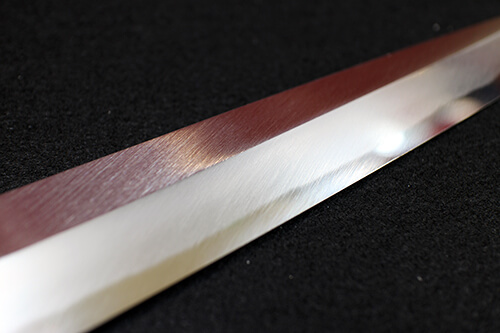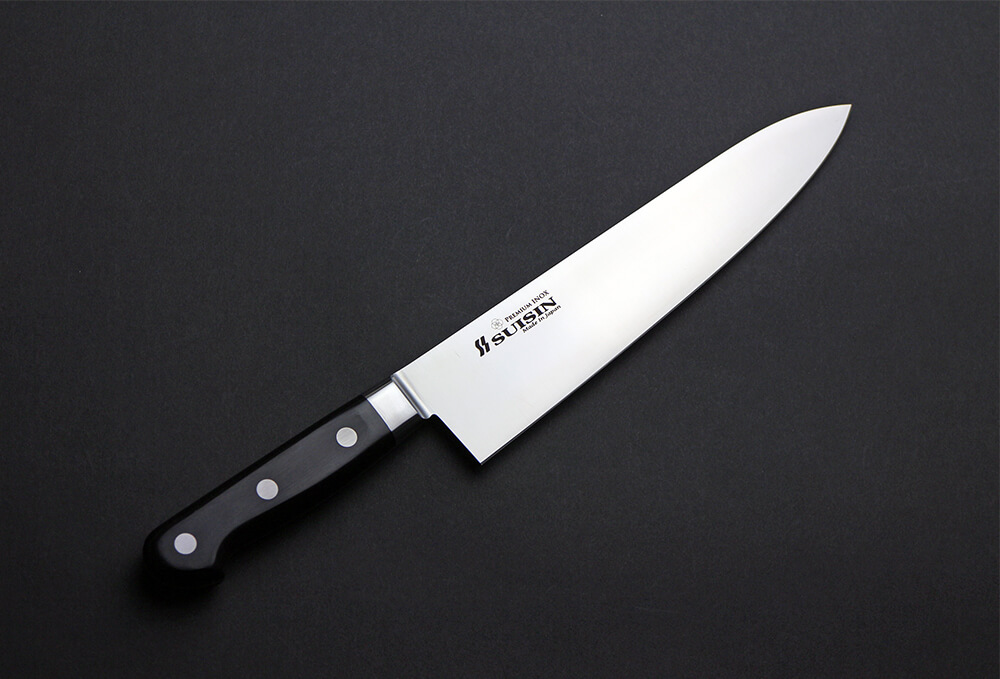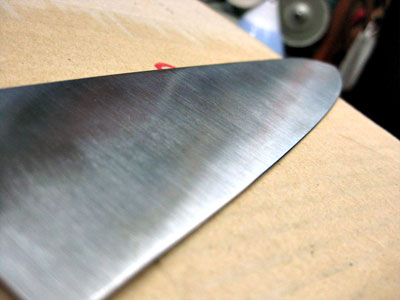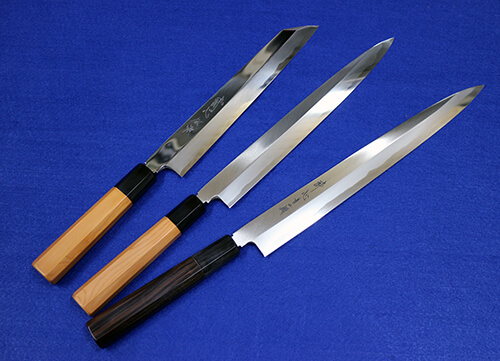Knife for reservation
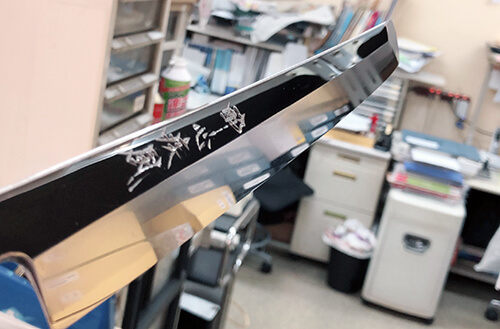
Today, I completed the Honbaduke for a knife that had been reserved—a 270mm Sakimaru Takohiki from SUISIN-Hayate, crafted by Keijiro Doi.

Can you feel it from the photo? The boundary between the soft iron and steel is simply mesmerizing. Unlike high-temperature fusion welding, you can sense that this was forged at low temperatures, allowing the materials to bond naturally. Keijiro-san referred to this process as ‘vacuum bonding.’
The true hammer marks emerge near the shinogi line, and while sharpening, there were a few spots where the stone couldn’t quite reach. I imagine this might be due to the deep hammering that compressed the steel during forging.
Whether this effect is good or bad, I can’t say—but the way the edge bites into the material is absolutely extraordinary.

Having the opportunity to sharpen one of Keijiro-san’s knives is a rare privilege, so I experimented with various whetstones while working on it.
Whether using natural or synthetic stones, the edge took on an incredible sharpness with ease. For now, I’ve finished with the King G-1.

I couldn’t resist taking a commemorative photo with the Kita-yama stone, using the mirror finish to capture some reflections!
I can only imagine how insanely sharp the edge would become if I had finished with the Kita-yama—it tends to create a very assertive edge. But to preserve Keijiro-san’s intended edge character, I decided to stop with the King G-1.
I feel truly fortunate to work with such exceptional knives every day.
- 2017-11-16

